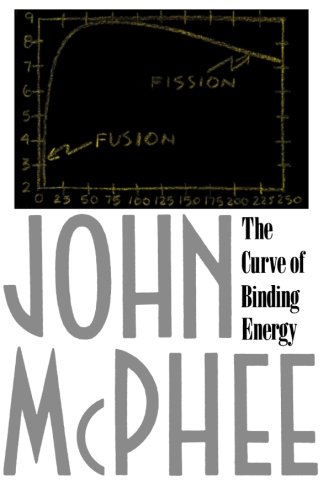The Curve of Binding Energy download
Par velarde ebony le samedi, février 6 2016, 21:22 - Lien permanent
The Curve of Binding Energy. McPhee J.

The.Curve.of.Binding.Energy.pdf
ISBN: 0374515980,9780374515980 | 240 pages | 6 Mb

The Curve of Binding Energy McPhee J.
Publisher: Farrar
(e) Electrostatic potential on the solvent-accessible surface color (f) Chemical shift perturbation derived binding curves (symbols) including best fits (solid lines) for H3K36me3 peptide (left panel) and dsDNA (right panel). (C) Dynamic Light Scattering of AuNCs (blue curve) and AuNCs@SiO2 (red curve). Nuclear fission and fusion | The Energy. I think the best technical summary of Project Orion is that given by Dr Theodore Taylor in John McPhee's book "The Curve of Binding Energy", circa 1974. The curve rises steeply to a maximum around iron-56. I don't know how to post pictures, but if you google images the nuclear binding energy curve you will see what I am on about. (B) X-ray photoelectron spectroscopy of AuNCs. "I'm sure it was just exactly what John McPhee predicted 20 years ago in his book, The Curve of Binding Energy" he said, "where McPhee quoted Theodore B. Without going into detail, here is a graph familiar to any physicist, the nuclear binding energy curve for the elements. After clustering and cross-validation of the final ensemble of solutions (Additional file 1: Figure S11a, Additional file 1: Table S2), we find one cluster of solutions that is in agreement with the cross-validation data, with the lowest energy structure shown in Figure 6a. Project Orion by George Dyson (son of the famous scientist Freeman Dyson) and John Mcphee's classic, The Curve of Binding Energy. Or the history of nukes, there are two books that are definitley worth the read. While the curve of binding energy says that things will end up at Iron with the lowest energy state, it takes a very long time and some very energetic processes to get there. The curve of nuclear binding energy vs. The peak in the curve between "low per-particle binding energy because of too few particles" and "low per-particle binding energy because of too many particles" is in the vicinty of Nickle-62 and Iron-56. The binding energy per nucleon, the energy required to remove one neutron or proton from a nucleus, is a function of the mass number A.